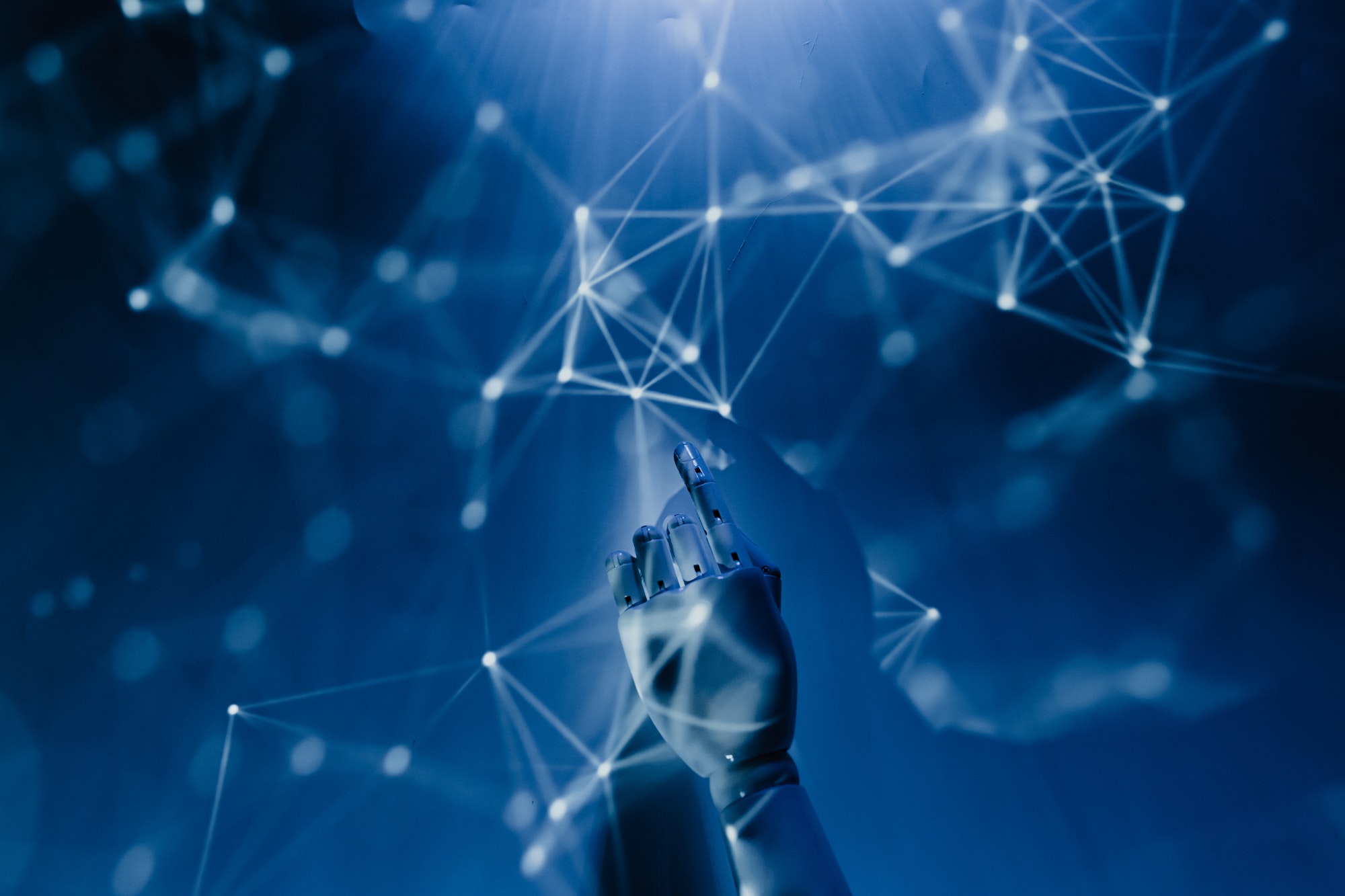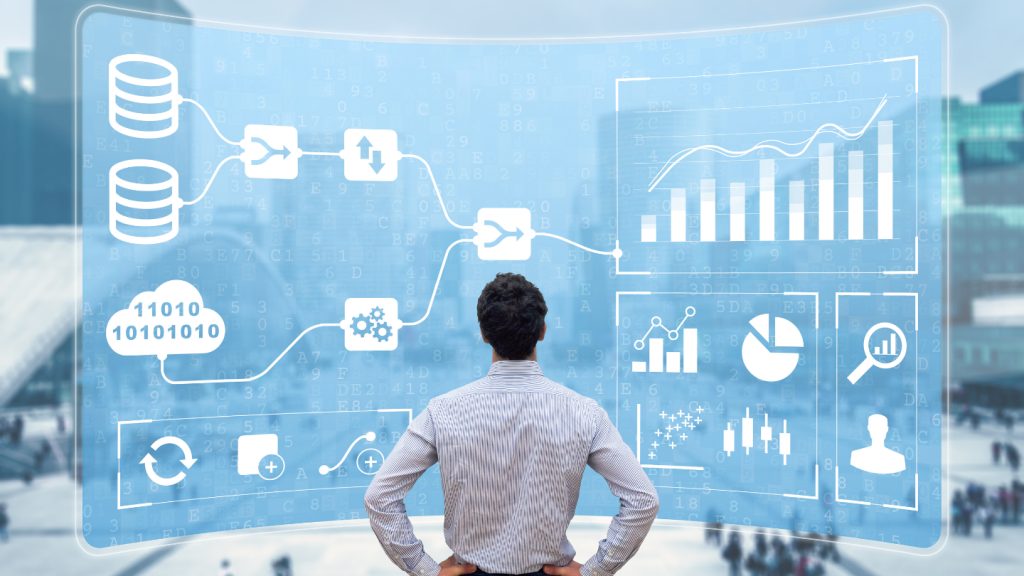
Artificial intelligence (AI) is increasingly all around us. It raises debates, curiosity, astonishment and even concern. Its scope has yet to be defined, and we are seeing it used in an ever-increasing number of applications, with very few guidelines.
In a recent interview with La Presse (1), Yoshua Bengio, the world leader in artificial intelligence and founder and scientific director of Mila, the Quebec Institute for artificial intelligence, shared his conviction that a “robot more powerful than a human-robot” is on the way. “There’s no scientific reason why we shouldn’t be able to understand where our intelligence emerges from with our brains, and therefore build machines at least as capable as the human brain.”
What about AI in the supply chain? Lots of potential! Indeed, along with sales and marketing, the supply chain is likely to be among the areas most impacted by the integration of artificial intelligence and deep learning. (2)
By Annick Beauparlant
Here are a few examples.
Artificial intelligence to improve sales forecasts
Typically, companies base their forecasts on past sales and a certain seasonal trend. An interval of several weeks and a greater or lesser data history are taken into account, depending on the case. However, this model takes a long time to react and adapt to real changes in market demand. Some companies even use their purchase history, instead of sales, which further masks market trends.
With the ever-increasing complexity of supply chains, companies today need to adapt by adopting much more agile models that respond quickly to market changes. This is where artificial intelligence can help! By collecting data and, above all, processing it into relevant information, AI can integrate it into demand planning models in real time.
Artificial intelligence to better anticipate market variations
One of the most important benefits of AI for supply chains today is its ability to better anticipate changes in supply and demand (3). The bullwhip effect has long been known to supply chain professionals as something to be reckoned with. A small upward variation in demand from a retailer creates a distortion, with greater demand from the distributor, then even greater demand from the manufacturer, who ends up producing for very high demand, in reality non-existent. What’s more, the delay before the manufacturer is informed and can react is often great, causing a response well behind the real needs of the market. AI can completely change this, giving companies real visibility of supply and demand variations.
Such improvements to forecasting models are critical in today’s supply chains, and can certainly make a difference to a company’s ability to remain competitive and maintain an adequate service rate. Customer expectations continue to rise. With the multiplication of distribution channels, a customer expects to have his product available not only when he needs it, but also through the desired channel. This increases complexity considerably, particularly for companies selling simultaneously in different channels.
Collecting the right data for an improved supply chain
It’s data collection, not necessarily automation, that is accelerating the recent transformation of supply chains (4). The COVID-19 pandemic highlighted the lack of visibility of supply chain stakeholders. It is this lack of visibility and the need for relevant data, that is driving the supply chain transformation we are currently experiencing. Many companies thought they had important data on their operations, but the crisis has shown just how critical transparency and visibility with suppliers and partners, among others, is. As a result, executives realized that having data isn’t enough: you have to have the RIGHT data.
Companies that have the right data to make decisions are the ones who will benefit most from integrating artificial intelligence.
AI and predictive maintenance
Predictive maintenance in factories and warehouses is another application of AI. Used as a complement to traditional preventive maintenance, predictive maintenance will enable rapid detection of anomalies and much more reliable prediction of potential failures (5). The use of connected sensors (thanks to the Internet of Things, IoT) and the interpretation of all the data captured can significantly reduce overall equipment maintenance costs, as well as reduce downtime and production losses due to unforeseen breakdowns.
AI and more precise planning
In the agri-food industry in particular, artificial intelligence can help companies plan with much greater precision. It can help detect previously unpredictable phenomena, such as a heatwave that will affect animal feed yields, or better manage operating costs by gathering and interpreting information on equipment (6). The concept of Smart Farming is currently in full swing. By making his farm smart, a farmer will benefit from a harvest of relevant data that will help him reduce his operating costs. For example, to better assess water consumption and fertilizer requirements.
Improving robot/human cohabitation thanks to artificial intelligence
We’ve been talking about automation in warehouses and factories for several years now. But AI enables us to go further, and above all, to better combine hybrid models, where robots can cohabit with humans. Previous-generation automated guided vehicles required significant physical modification of workplaces. In many cases, significant changes to related business processes were also required, making integration into smaller companies hardly feasible. This is not the case today, thanks to artificial intelligence, which enables robots to adapt to “complex scenarios of human-robot interaction ” (7). The integration of robots in cohabitation with humans is therefore becoming possible, even for medium-sized or even small companies. Investments can be made gradually, with the company able to measure the return before undertaking a larger investment.
Chatbots are another way of leveraging artificial intelligence in the supply chain. Walmart has already followed suit by delegating part of its negotiations with certain suppliers to a chatbot (8). Indeed, with the help of software called Pactum AI, the company is now using the chatbot to conclude agreements with certain tried-and-tested suppliers. Of course, deploying such a project requires careful preparation. By first identifying certain product categories, Walmart was able to launch its successful pilot project relatively quickly. Subsequently, extending the project to different countries and more product categories becomes easier and easier, as the software constantly learns from previous scenarios, making it simpler to adjust parameters.
Artificial intelligence for a healthier corporate culture
Beyond the technical applications and financial gains of integrating AI into companies, there are many cultural advantages to introducing artificial intelligence into an organization’s activities (9). Indeed, although one might think that employees might resist, feeling their jobs threatened, it has been shown instead that AI can increase motivation, a sense of belonging and cohesion within teams. Employees equipped with tools derived from artificial intelligence make better decisions and feel more effective in their work.
In conclusion, we only know the tip of the iceberg of what artificial intelligence can do to help us improve supply chains. But already, the applications are numerous and the technologies are becoming more and more accessible.
But what about ethics? From the moment an artificial intelligence system is programmed, humans impose certain biases. Whether they are known or not, they will certainly influence the learning process of the AI system. This is another vast subject, the scope of which we’re only just beginning to grasp, but which is sure to provide interesting food for thought and debate in the months to come.
Don’t miss out on our next articles, subscribe to our newsletter!
Do you like to read some similar articles? Check out our blog here!
Sources:
- Brousseau-Pouliot, Vincent, “Un avenir incertain”, lapresse.ca, January 2023, https://www.lapresse.ca/contexte/2023-01-22/un-cafe-avec-yoshua-bengio/un-avenir-incertain.php#
- M. Chui, N. Henke and M. Miremadi, “Most of AI’s Business Uses Will Be in Two Areas’, HBR.org, July 2018, https://hbr.org/2018/07/most-of-ais-business-uses-will-be-in-two-areas
- McKendrick, Joe, “Artificial Intelligence : Not A Panacea For Supply Chain Issues, But Extremely Helpful”, Forbes.com, July 2022, https://www.forbes.com/sites/joemckendrick/2022/07/14/artificial-intelligence-not-a-panacea-for-supply-chain-issues-but-extremely-helpful/?sh=11ce25da5821
- M. Scherage, “Data, Not Digitalization, Transforms the Post-Pandemic Supply Chain”, MIT Sloan Management Review, July 2020.
- M. Chui, N. Henke and M. Miremadi, “Most of AI’s Business Uses Will Be in Two Areas’, HBR.org, July 2018, https://hbr.org/2018/07/most-of-ais-business-uses-will-be-in-two-areas
- Touma, Chloé-Anne, “Des algorithmes dans les poulaillers du Québec”, CScience.ca, July 2022, https://www.cscience.ca/2022/07/05/des-algorithmes-dans-les-poulaillers-du-quebec/
- Touma, Chloé-Anne, “Des robots mobiles autonomes dans les entrepôts nord-américains, CScience.ca, July 2022, https://www.cscience.ca/2022/07/25/des-robots-mobiles-autonomes-dans-les-entrepots-nord-americains/
- R. Van Hoek, M. DeWitt, M. Lacity, and T. Johnson, “How Walmart Automated Supplier Negotiations”, HBR.org, November 2022. https://hbr.org/2022/11/how-walmart-automated-supplier-negotiations
- S. Ransbotham, F. Candelon, D. Kiron, B. LaFountain, and S. Khodabandeh, “The Cultural Benefits of Artificial Intelligence in the Enterprise,” MIT Sloan Management Review and Boston Consulting Group, November 2021.







